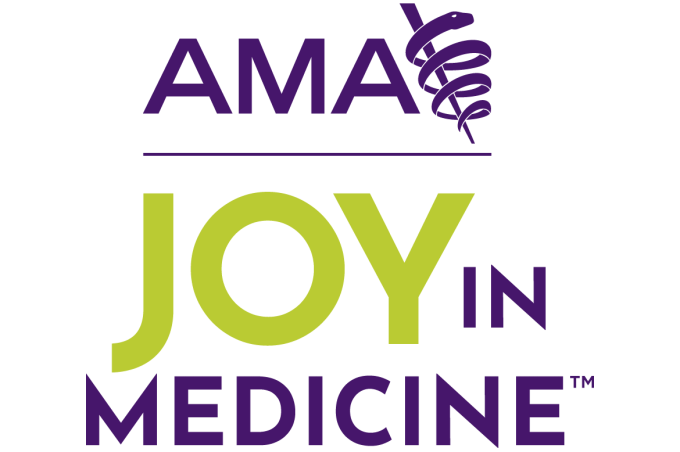Doug Eisert, MD, practices in a rural part of Washington state where vaccination rates for human papillomavirus (HPV) are low and the incidence and mortality rate of HPV-related cancer is higher than suburban and urban areas.
“HPV vaccination is different from others because there is more hesitancy regarding this compared to the other standard vaccinations,” said Dr. Eisert, a pediatrician with the East Wenatchee Clinic at Confluence Health, which is a member of the AMA Health System Program that provides enterprise solutions to equip leadership, physicians and care teams with resources to help drive the future of medicine.
Studies show the cervical cancer incidence and mortality rates are higher in rural counties, in part due to HPV vaccine hesitancy. That is why Dr. Eisert and other advocates decided to do something about it.
Dr. Eisert played a key leadership role in two immunization collaboratives sponsored by the Washington Chapter of the American Academy of Pediatrics. Together, they’ve made a significant clinical impact on vaccine rates in Wenatchee Valley, Washington. “WA-CHIP” aims to increase vaccination rates for children and adolescents, whereas “HPV@9” focuses on increasing HPV vaccination for children 9–10 years old.
The AMA has policy that urges physicians and other health professionals to educate themselves and their patients about HPV and associated diseases, HPV vaccination and routine HPV-related cancer screening. This policy also encourages appropriate parties to investigate means to increase HPV vaccination rates by offering vaccinations in community-based settings.
Give the HPV vaccine earlier
Research has shown that children 9–10 years old respond well to the HPV vaccine.
“Giving the HPV vaccine earlier increases the window of opportunity and decreases the number of vaccinations needing to be given at 11–12 years old. This makes it easier to spread out the vaccinations and helps patients accept them,” said Dr. Eisert.
His team, with the help of collaboration leaders, boosted vaccination rates by 24% for children and adolescents at Confluence Wenatchee and 15% at Confluence East Wenatchee.
They did this by tracking vaccination numbers, discussing next steps and participating in research to learn what worked better in clinic.
Establish patient trust
Another important element was engaging with patients, earning their trust, and helping them overcome their hesitancy.
Obtaining the trust of patients and families is a powerful tool in protecting children in rural America, said Dr. Eisert.
“We presented data we learned from the collaborative and knowledge that we were previously aware of, and shared our concerns about cancer. When patients declined, we encouraged them to think about this for the next visit,” he added.
Collaborate with others
His work in the two collaboratives earned him the Washington Rural Health Association Leah Layne Memorial Award from the Washington Chapter of the American Academy of Pediatrics for his “significant impact on child and adolescent vaccine coverage in the Wenatchee Valley.”
The award acknowledges the contributions his pediatric team made to improve vaccination rates in children, particularly 9–12 years old, said Dr. Eisert, who collaborated with Sarah Rafton, MSW, executive director of the Washington Chapter of the American Academy of Pediatrics, and her team on these initiatives.
“Dr. Eisert really modeled the leadership and enthusiasm that helps clinics transform their care,” Rafton said. “He engaged the whole team at two clinic sites to get their ideas for how to increase vaccination rates and make lasting changes. He paid attention to what was working well and gaps or pain points to help the teams succeed. His passion for child health and improving care was infectious.”
Use direct communication
The HPV vaccine has elicited varied responses from parents in Eastern Washington. Because the vaccine protects against a sexually transmitted infection, some parents are more skeptical of its necessity or propriety.
“Vaccinations and science are not currently trusted in the way that was once the case. Misinformation, political views, the COVID-19 pandemic and other factors have all played a part in this,” said Dr. Eisert, emphasizing that “vaccinations have never been safer than they are today, but many do not believe this reality.”
HPV@9 helped families overcome hesitancy through a direct-communication approach, making vaccination at 9 years old a standard process for patients, explained Dr. Eisert, noting that parents would be informed: “Your son or daughter is due for the HPV vaccination, and I would recommend that we proceed with this today.”
This style of communication helped to further the awareness that this is a standard vaccination, he said.
Dr. Eisert and his team also addressed barriers such as missed opportunities for vaccinations, using any visit as a chance to encourage and give immunizations. They discovered the effectiveness of reminder calls or texts to patients who are due for the next vaccination.
Through HPV@9, Wenatchee clinics improved vaccination coverage by 31% between 2022 and 2024, which impacted 1,252 patients 9–10 years old.
Vaccine initiatives during the same time period also improved vaccinations for Hispanic patients by 27.5%.
“I credit our Latinx staff members who shared their own beliefs when asked what they would do if they had to decide,” said Dr. Eisert. Patients felt safe hearing about vaccination from health professionals who looked like they did and shared the same cultural heritage.
Advice for other health systems
Vaccine hesitancy is a challenging problem that will require combined efforts of all physicians and other health professionals in the future.
“Collaboration efforts like this are especially important in this climate. We learned a great deal about gaining trust, working with families and patients to understand vaccine hesitancy and thus address their specific concerns,” said Dr. Eisert.
If a collaborative effort is available, organizations or departments should try to pursue this, he urged. “I would strongly recommend it as the experience and expertise of others can help departments improve their vaccination rates.”




